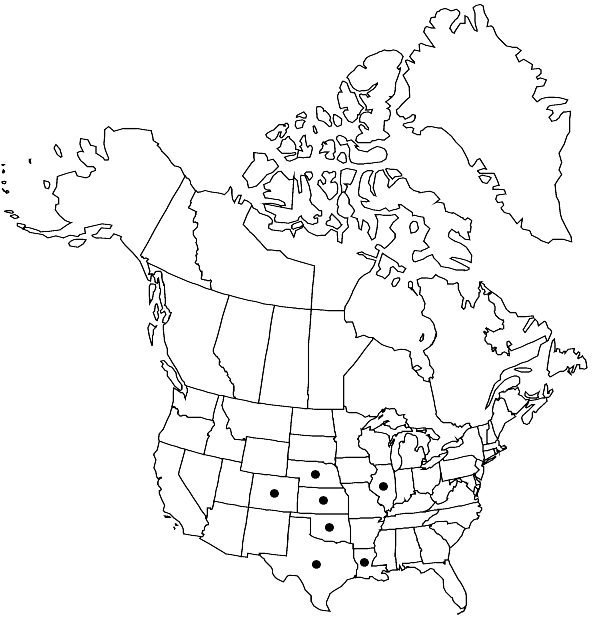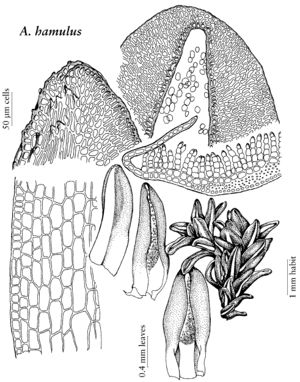Aloina hamulus
in H. G. A. Engler and K. Prantl, Nat. Pflanzenfam. 214[I,3]: 428. 1902,.
Plants to 6 mm. Leaves lingulate, 0.6–2 mm, margins entire to irregularly crenulate, undifferentiated at base, apex cucullate; costa subpercurrent to percurrent, filaments of 3–7 cells, cells cylindric to subspheric; cells of leaf base 13–59 µm, medial and distal cells 9–26 µm, large solid papillae on abaxial surface distally. Sexual condition dioicous. Seta 7–16 mm. Capsule urn ovoid-cylindric, 1.1–3 mm; operculum conical to long rostrate, erect or inclined, 0.5–1.2 mm; peristome to 900 µm, twisted to nearly straight. Spores 9–13 µm.
Phenology: Sporophytes unknown in flora area.
Habitat: Sandstone or calcareous rocks, sandy soil in dry sunny sites
Elevation: moderate to high elevations (700-1800 m)
Distribution

Colo., Ill., Kans., La., Nebr., Okla., Tex., Mexico, Central America (El Salvador), Central America (Guatemala)
Discussion
The undifferentiated marginal cells of the leaf base and the large abaxial solid papillae near the leaf tip distinguish Aloina hamulus from A. rigida, which, in addition, has a strongly twisted and longer peristome. The ovoid-cylindric capsule and abaxially papillose leaves distinguish this species from A. aloides var. ambigua. Young leaves should be checked when papillae are not evident in mature leaves.
Selected References
None.
Lower Taxa
"um" is not declared as a valid unit of measurement for this property.
